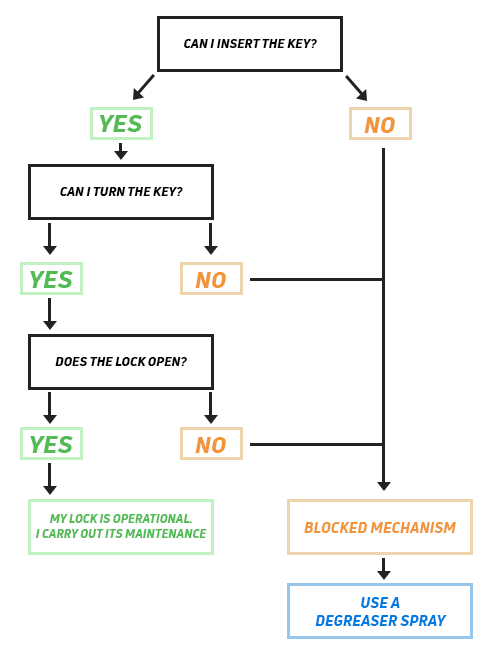.jpg)
Advice and tutorials
HOW TO MAINTAIN YOUR BIKE LOCK, THE GOOD PRACTICES!
For a lock to be effective and to keep its primary function for as long as possible, you will need to maintain it as well as your bike and accessories! However, maintaining your lock is not instinctive for most people and knowing how to do it is not easy. That's why Zéfal helps you know the best way to maintain your lock.
Why maintain your lock and signs of wear
Maintaining and cleaning a lock will extend its life and keep it functioning properly. In daily use, your lock will be exposed to bad weather, cold and humidity that can affect its proper functioning. Dirt and rust caused by rain and dust can damage its mechanism. It is therefore necessary to clean it regularly.
The lock and the hinged parts of the lock are the areas where dust and other elements can settle and interfere with the proper functioning of the lock. The friction caused by these external elements when you try to open and close it will damage the lock and reduce the life of its proper operation. To avoid these problems, a regular cleaning and lubrication is recommended.
There are several signs of wear that can alert you to the proper functioning of your lock! If the lock does not work properly or if you have to force the key in and/or force it to turn, that means that your lock is seized up. We recommend you to never force the key in and follow the instructions to solve your problem. In many cases, the use of a seizure remover such as a dregreaser spray will solve your problem.
Cleaning your lock
The maintenance of your bike lock will go through several steps such as cleaning, degreasing and lubrication! Each step must be done correctly, with the right products in order not to damage your lock.
First, you will need to undust the body of the lock as well as the block containing the mechanism with a clean cloth. Then clean the rest of the lock with soapy water, being careful not to get water in the mechanisms. Then, remove any dirt and dust that has gotten into the lock mechanism with a can of compressed air. Never immerse a lock in water or use a pressure washer! Remove any moisture that may be present in the mechanism by using a degreaser spray. You also can use this product to unseal your lock if necessary. The spray only serves to prepare your lock for the application of the lubricant of your choice, it is not sufficient on its own to maintain its mechanism.
When these steps are completed, you can move on to lubrication of your lock. For this, you have 2 choices: lubrication with graphite powder or lubrication with oil! Concerning this second solution, you can use our Pro Wet Lube which will be perfectly suitable. Concerning the graphite powder, you must be careful not to use it in excess. A small amount of graphite is enough. Excessive application can interfere with the movement of the mechanism. Always apply the graphite powder in a dry and unoiled lock.
To apply your lubricant, hold your mechanism vertically so that the product flows more easily into the areas to be lubricated. In the case of a lock with key, you can apply lubricant to the key, insert it and operate the mechanism. Remember to wipe off the excess with a clean cloth!




Maintain your lock with the Pro Wet Lube and a degreaser spray
.jpg)
The good practices of the use
As seen in the article on how to choose your bike lock, our range of anti-theft devices is broken down according to a classification system with different levels of security, in order to help you choose the product best suited to your needs. To preserve your lock, it is advisable to follow certain rules:
+ If possible, choose a busy place to disturb thieves.
+ Do not place your lock on the ground and attach it halfway up if possible. This will avoid contact with water and dust, and will prevent the thief from breaking it by knocking on it.
+ Hang your bike on a fixed point that is firmly anchored to the ground and high enough that the lock cannot be removed while the bike is being carried.
+ Secure the frame and rear wheel as much as possible. If your bike has quick-releases on the wheels and seat, plan to secure these areas as well, at least with a cable or a U-lock for example. If you are missing a lock, you can secure your front wheel with the rest of your bike.
+ Avoid bumps and contact with rough or protruding surfaces, and securely fasten your lock when riding your bike. Damaging the surface of your lock will not prevent it from working properly, but it may cause corrosion of the steel or damage to the frame of your bicycle when in use.
+ Never leave your lock unused in its holder when transporting it by car on a bike rack to avoid any risk of it coming off.
+ If you use your lock on a daily basis, we recommend you to clean and lubricate it every 3 months (e.g. at the change of season). Regular lubrication will also prevent your lock from freezing in the winter!
